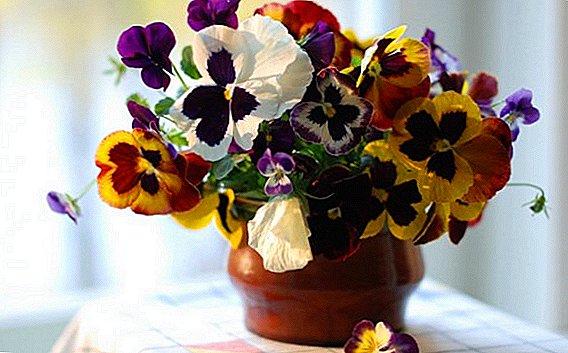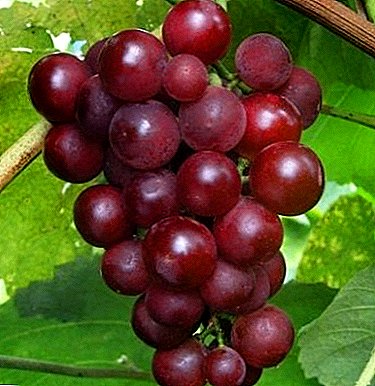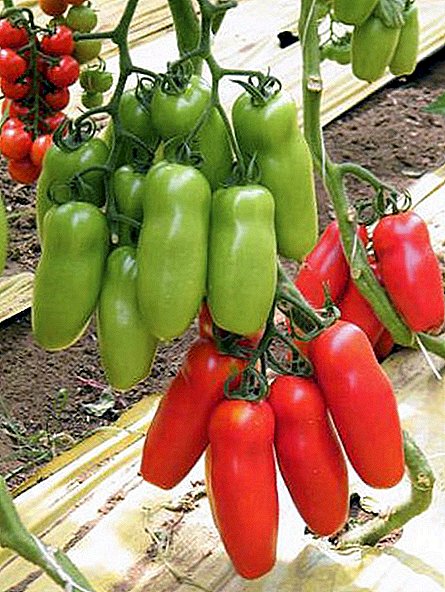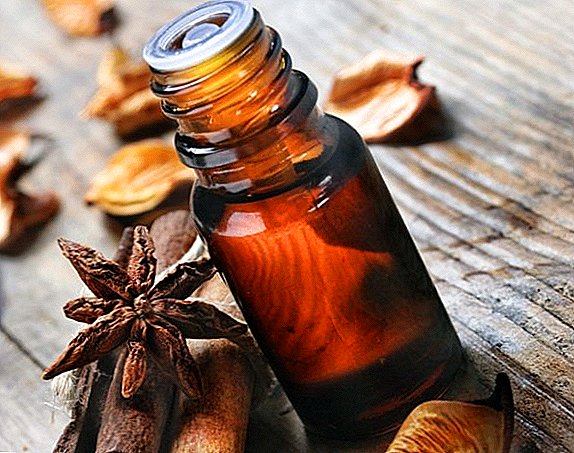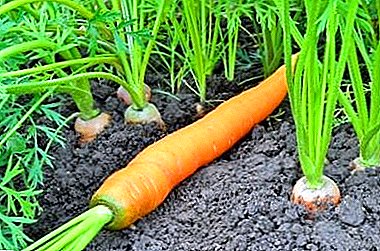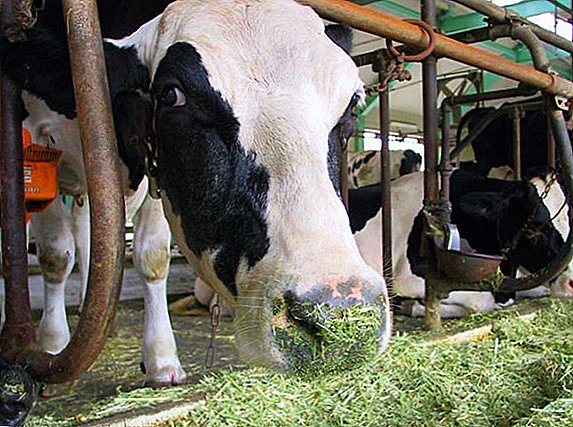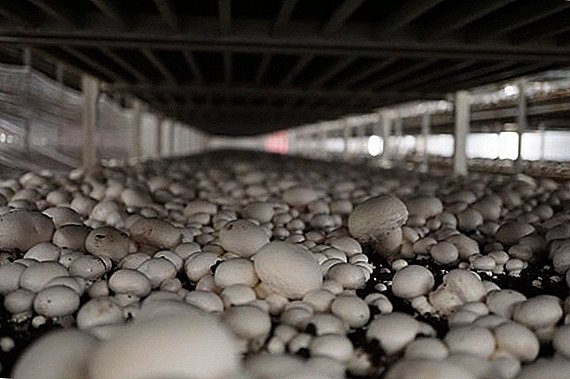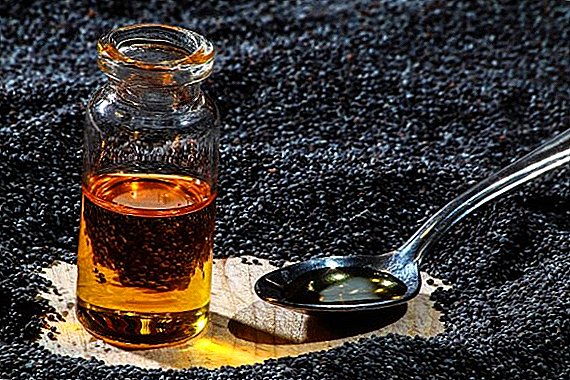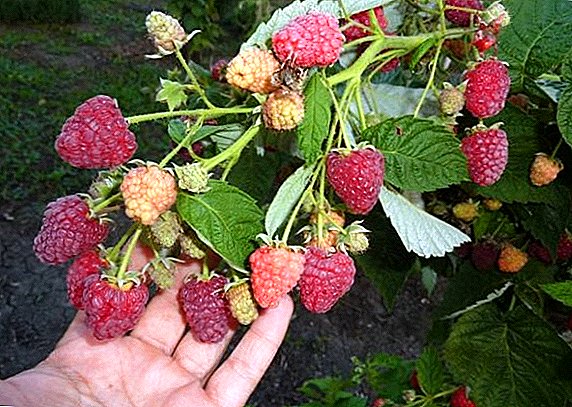 Raspberries are loved by children and adults, there is probably no such summer resident who would not grow bushes with this fragrant berry.
Raspberries are loved by children and adults, there is probably no such summer resident who would not grow bushes with this fragrant berry.
In this article we will discuss the raspberry variety with the fabulous name "Firebird", its advantages and secrets of cultivation.
Variety description
Grade remontantny, recommended for cultivation for commercial purposes in mild climates. Many gardeners and farms prefer to grow exactly remontant varieties, developing in full cycle for the season, more resistant to negative external environment.
"Firebird" is almost two meters tall. Compact bush with flexible light brown shoots and rich green carved foliage needs support. The shoots have thorns, but unlike representatives of many varieties, these spines are soft and do not create difficulties in caring for the plant. The bush branches well, forming new fruit branches.
Unfortunately, the "Firebird" is unsuitable for temperate latitudes, since it does not have high winter hardiness. But the variety tolerates transportation and has a lot of other advantages, and there are no significant drawbacks, besides the one indicated, of this raspberry.
Find out what advantages and disadvantages of Novost Kuzmina, Indian Summer, Shy, Hercules, Lyashka, Brusviana, Diamond, Khimbo Top, Monomakh's and Orange raspberries raspberries Miracle, Fairy Tale, Fortress, Patricia, Bryansk Miracle, Vera, Meteor, Senator.

Grade advantages:
- immunity to diseases and pests;
- resistance to high temperatures and drought;
- can bear fruit without additional pollinators;
- large fruits;
- no shedding of fruits when ripe;
- high yield;
- variety in application.
Did you know? What's interesting nthe peas can pollinate raspberries even in the rain, because its flower always looks down.
Characteristics of berries and yield
Berries in the form of a cone, dense, with a glossy shine, ripening, becoming crimson-red. On average, the length of the fruit is from 1.5 to 2 cm, weight - from 4 to 6 grams.
Raspberries are sweet and sour, juicy and aromatic. The variety has a high content of ascorbic acid, about 45 mg / 100 g, which increases its healing properties.
With one plant it is possible to collect more than two kilograms of crop, which is about one hundred thirty centners per hectare.

The Firebird is diverse in its application:
- fresh;
- jam;
- jam;
- jelly;
- marmalade;
- paste;
- baking filling;
- juice and compote.
Learn how to cook raspberry jam, jam, pouring, raspberry wine, leaf tea.
Agrotehnika cultivation and care for raspberries
Growing a variety requires knowledge and attention. From that, how much careful care of a plant will be, its productivity depends.
Selection of seedlings
Selection criteria for raspberry seedlings:
- branched root system;
- root shoots should not be dry;
- Shoots of medium thickness, not less than 1 cm;
- the presence of two shoots is preferable, the height does not matter;
- the presence of at least four kidneys.

The height of the shoot is unimportant, because when planting you still have to shorten the branches, leaving 15-20 cm. It is much more important where the planting material is purchased. When buying seedlings in a nursery or varietal station, one can be sure that the ordered variety has been bought, and not another, and also that the planting material is of high quality.
Conditions of detention
"Firebird" loves the sunny places, sheltered from drafts. Lighting she needs all daylight hours. To avoid shading the bushes, it is recommended to plant them from north to south, keeping the distance between the bushes. The best neighbors raspberries are currants black and red, blackberries, roses. The distance of groundwater from the surface of the soil in the area must be at least two meters.
Important! You can not plant raspberries after such crops: peppers, tomatoes, eggplants, potatoes.
Soil and fertilizer
Soil for remontant grade need loose, nutritious with an acidity range of 6-7. Before planting, digging is done with the following composition of fertilizers per square meter:
- up to three buckets of humus;
- 200 g of sulfuric potassium;
- 200 g of superphosphate.

Phosphorus-potassium complexes contribute during budding and fruit formation. Due to the lack of minerals in the plant, the leaves become shallow and turn brown, the shoots dry and develop poorly.
Did you know? The first to grow raspberries as a cultivated plant began the Romans in the third century BC.
Watering and moisture
Deep and extensive root system requires abundant watering, up to ten liters of water is poured under one bush. In the presence of regular precipitation, watering is reduced or stopped, in the absence of it, it is carried out more often.
A signal to the lack of moisture will be dry soil. Pristvolny circle "Firebird" should be moderately wet to a depth of about 30 cm. Watering is particularly important during flowering and the formation of fruit ovaries.
A soil mulch from sawdust, for example, will help keep the soil moist for a long period. Immediately after watering, it is necessary to loosen the soil, thereby saturating the roots of the plant with oxygen. Be sure to clean the tree trunk circle from weeds.

Reproduction and planting
The best material for breeding varieties - cuttings. From the bush cut off the shoot with a leafy rosette, so as to capture a piece growing under the ground. The length of the cutting is about five centimeters.
Learn how to plant raspberries in spring and autumn, how to replant raspberries, how to cut raspberries, how to prepare raspberries for winter.
Rooted in the prepared substrate in the greenhouse. Carry out the procedure in the fall. In early spring, rooted cuttings begin to harden, revealing a greenhouse, gradually increasing the time. In autumn, hardened bushes are planted in open ground.
When buying ready seedlings they can be planted in the spring and in the autumn. The depth of the pit should correspond to the length of the roots, while planting the root neck remains above the surface. At the bottom of the hole put drainage, after planting a bush abundantly watered, covered with mulch. The distance between the bushes - 1 meter, between the rows - 120 cm.
Pruning
Raspberries are cut twice per season: in spring and autumn. The spring procedure is sanitary and stimulating yield value. Spring pruning occurs in mid-April, when it is possible to distinguish viable shoots (by revived buds) from unpromising branches. Remove dead, cracked branches.

Important! In May, shoots pinch, stimulating fruiting.In the fall, the rules for raspberry haircut differ depending on the region where the variety is grown. Carry out the procedure after harvesting. In colder climates, it is recommended to cut the bush completely for safe wintering.
This procedure, together with the shoots, will remove possible pests that have climbed under the bark. In southern areas, annual shoots are pruned, leaving a process by three centimeters, removing broken and dry branches.
Growing difficulties and recommendations
Gardeners with growing experience, including this raspberry, recommend taking a number of measures that greatly facilitate the process:
- The bushes abundantly bear fruit and the branches can break under the weight of the fruits, therefore it is necessary to immediately set up a support when planting - wooden posts interconnected by tight string or wire in two rows.
- The dense black film spread under the bush will contribute to the early harvest, it will warm up the soil, attracting heat. In addition, the lower berries in contact with the ground often become prey to insects or begin to rot. With a film of this trouble can be avoided.
- Plant a row in the aisle. This plant with its root system creates a dense protection around the roots of raspberries, which helps the moisture-loving berry to maintain water reserves.
- If possible, in a strong heat, the plant should be applied and a sufficient amount of moisture should be monitored, because the berries may shrink due to the drought and heat.
- For the winter, the bushes are covered with special material to prevent the roots from freezing.

Find out what diseases are terrible raspberry, from which pests should protect it.
Pests, diseases and prevention
"Firebird" is resistant to major diseases (rot, anthracnose, rust) and insect attacks, in order to support the natural variety immunity, they take preventive measures:
- Do not allow thickening when planting, in time to carry out pruning.
- Regularly change the mulch.
- Remove weeds.
- In winter, the soil is thoroughly cleaned near the trunk circle and between the rows.
- Spring treatment is carried out for Bordeaux diseases (it is necessary before flowering, after - if necessary).
- Sprayed with drugs "Aktara", "Karbofos", "Fitoverm" from the invasion of pests.
Video: how to grow raspberries Firebird
Grade remontant raspberry Firebird: reviews

Shl. And some varieties really do not "pull" our heat and suffer. (but for this there is a separate topic).





